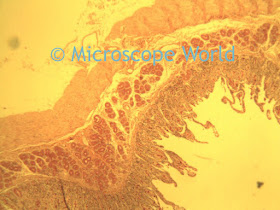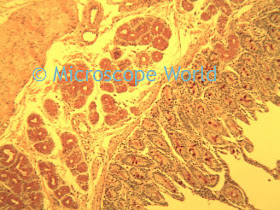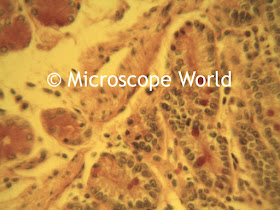When using a
compound light microscope, there are multiple factors that affect the brightness of your image. We will cover a few of them here.
Numerical Aperture
The
numerical aperture (N.A.) is a number that expresses the ability of a lens to resolve fine detail in an object being observed. The higher the N.A. value at a given magnification, the brighter the microscope image will appear.
Magnification
As the magnification of your microscope is increased, brightness of an image is reduced. This is why many times when increasing magnification from 400x to 1000x it becomes important to adjust the iris on the condenser in order to allow more light to reach the specimen.
Beam Splitter
In a trinocular microscope (a microscope with a camera port) the beam splitter is a rod that when engaged, sends more light up toward the camera in order to produce higher quality images. Often when the beam splitter is engaged, one of the eyetubes in the microscope goes dark, or only partial light (maybe 40%) is sent to both eyetubes.
The images below show how as magnification is increased, brightness of microscope images decreases. All images were captured using the
MW4-HD2 digital biological microscope.
 |
| Duodenum captured at 40x magnification. |
 |
| Duodenum captured at 100x magnification. |
|
 |
| Duodenum captured at 400x magnification. |
If you are having trouble getting enough light to your specimen, make sure the
condenser is adjusted properly, that the rheostat control on the light is turned up sufficiently, and that the beam splitter is only engaged when capturing images with a
microscope camera.


